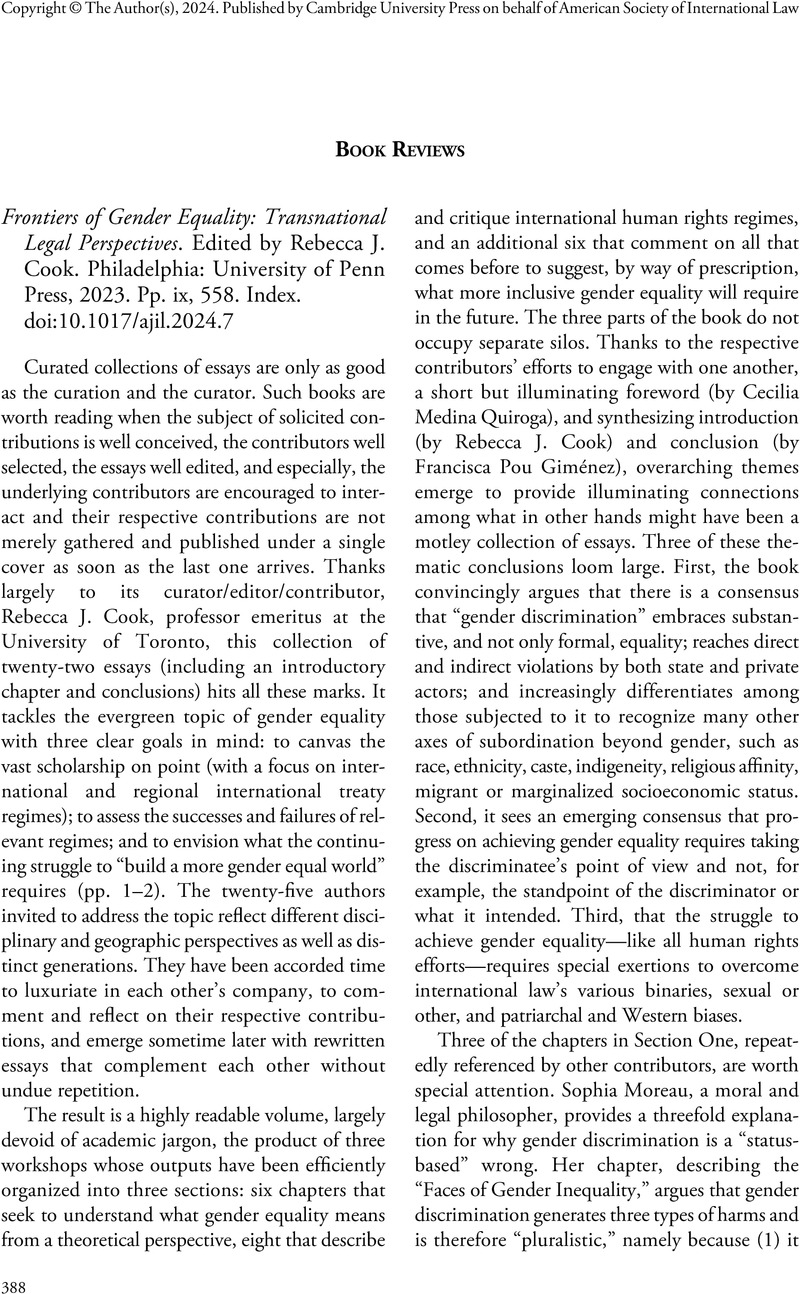No CrossRef data available.
Published online by Cambridge University Press: 29 April 2024

1 See José E. Alvarez & Judith Bauder, Women's Property Rights Under CEDAW, Ch. 6 (forthcoming 2024).
2 See generally Pablo de Grieff, The Vernacularization of Transitional Justice: Is Transitional Justice Useful in Pre-Conflict Settings?, in The Complexity of Human Rights: From Vernacularization to Quantification (Philip Alston ed., forthcoming 2024); Rubio-Marín, Ruth & Sandoval, Clara, Engendering the Reparations Jurisprudence of the Inter-American Court of Human Rights: The Promise of the Cotton Field Judgment, 33 Hum. Rts. Q. 1062 (2011)CrossRefGoogle Scholar.
3 See, e.g., Hilary Charlesworth & Christine Chinkin, The Boundaries of International Law: A Feminist Analysis (2000).
4 See, e.g., Sylvia Tamale, Decolonization and Afro-Feminism 131 (2020).
5 See, e.g., David Kennedy, The Dark Sides of Virtue: Reassessing International Humanitarianism 19 (2004).
6 See, e.g., Whyte, Jessica, Powerless Companions or Fellow Travellers? Human Rights and the Neoliberal Assault on Post-colonial Economic Justice, 2 Radical Phil. 13 (2018)Google Scholar.
7 See, e.g., Alvarez & Bauder, supra note 1.